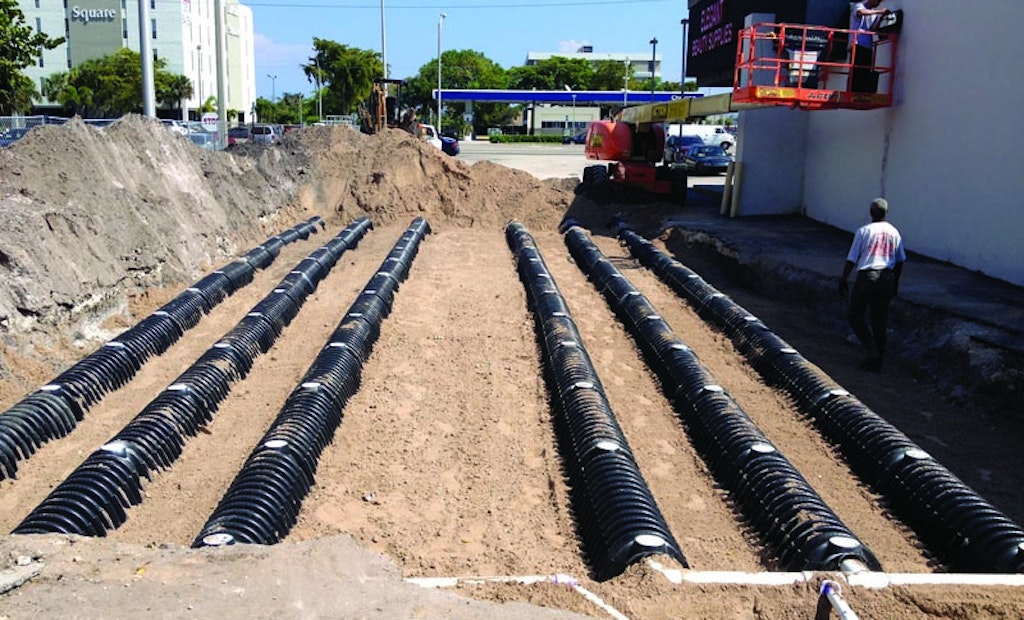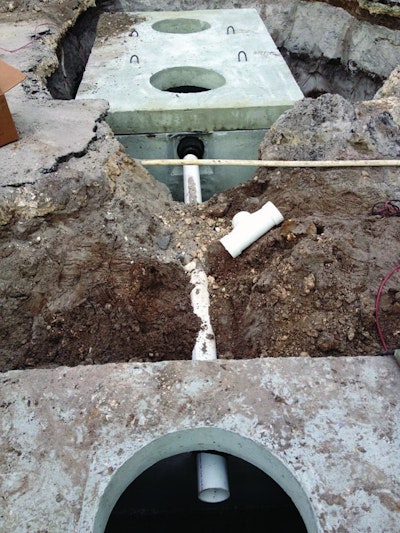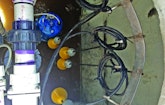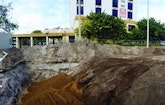
Interested in Pumps?
Get Pumps articles, news and videos right in your inbox! Sign up now.
Pumps + Get AlertsIt’s common for a property in metropolitan Miami to have a septic system, says Brittnie Nesenman, who with her husband Jason co-owns Jason’s Septic Inc., Miami. Because the municipal wastewater plant has limited capacity, about 70 percent of Miami-Dade County utilizes septic systems, including urban areas where you would expect to find municipal sewer. It’s not uncommon for property owners to be on a waiting list for a couple of years before they are allowed to connect to the big pipe.
Jason’s Septic was first asked to inspect and certify the existing onsite system in an older building owned by AS Ventures. The company had owned the structure for a while and planned to divide it into two retail spaces. Jason’s Septic did the inspection, but the system didn’t meet code. Its capacity was too small, and the drainfield had been covered with asphalt. The owner hired the Nesenmans to install a proper system.
THE PROPERTY
The site is a corner lot at a major intersection and is tightly surrounded by the property of another business. About a third of the site is covered by the building, and the rest is used for parking, except for a section of not much more than 20 by 120 feet where the new tanks and drainfield would just fit.
Because the capacity of the new system was beyond a legal threshold, the Nesenmans couldn’t do the design work themselves. So they teamed with engineer Ernesto Santana.
Then the meetings began. Because of the constrained space, it looked at first as if the system would have to be some sort of limited-loading arrangement that would be difficult to install. But in a series of meetings with county officials, the Nesenmans and Santana developed the concept of using a standard drainfield but splitting it in two sections with alternate dosing. After six months of discussions, the county agreed to the solution and issued a permit. Installation was set for February during southern Florida’s dry season.
THE SYSTEM
Although two businesses occupy the building, they are not large water users and they don’t produce challenging effluent. One is a check-cashing business. The other sells hair and beauty products and wigs, but it does sales only. No dyes or other chemicals go down the drains. Wastewater comes from restrooms for employees.
From the building, wastewater flows through a 4-inch pipe into a 1,900-gallon concrete tank. This functions as a standard septic tank. Water then flows by gravity through a 3-inch pipe into the second tank, a 1,050-gallon concrete model set in line with the first and used for dosing the drainfield. Both tanks came from Sebring Precast Products in Sebring, Fla. A pair of Goulds pumps, controlled by a Goulds CSI Duplex panel with alarm and four floats, feed water to the drainfield through a Zoeller 2-inch Tri-Check valve.
The two sections of drainfield are each 529 square feet and consist of six, 66-foot-long runs of Infiltrator chambers on top of 42 inches of sand. The long edges of the drainfield are set back about 8 feet from the rear property line and about 8 feet from the building wall.
Both tanks have traffic-rated concrete above them and access is through traffic-rated manholes.
INSTALLATION
The Miami area can provide challenges for installers, Brittnie says. “You may have a lot of coral rock to dig through. A block south of that the land could be swampy, and you have to de-muck the whole area.” This site had sand on top of limestone formed in small beads.
Other features of the site posed a challenge. It was a relatively tight space. The septic tank wall was 8 feet 9 inches from the property line, and its opposite wall was 5 feet 10 inches from the wall of the AS Ventures building. The second tank was also 8 feet 9 inches from the property line, and a few feet to its rear was the wall of an existing building, and next to that, on the AS Ventures property, was a utility pole. In the back corner of the property, about 9 feet from the dosing tank, is an enclosure for a trash bin. Trucks serving the bin drive over the tanks to reach it.
Jason worked around the space problem with careful scheduling. First the old tanks came out, but he left the paving in place over the old drainfield. This provided a solid base of support for a small crane truck to ease in behind the building and set the new concrete tanks into place.
Then Jason cut up the asphalt over the old drainfield and had it hauled away. What they found underneath was a surprise. “It was like virgin ground when they put that original system in sometime during the 1950s. The drainfield consisted of about 10 square feet of terra cotta tubes, and it was working perfectly,” Brittnie says.
The existing soil was next to come out, and that was replaced with the 42 inches of sand for good drainage. When the system was complete and the drainfield covered, the building owner hired another company to plant grass.
It was the people of the surrounding area of Miami Gardens that were also a challenge. “If you Google Miami Gardens you’ll find the crime rate is crazy high,” Brittnie says. During the day workers were perfectly safe, but it could have been trouble if they stayed past sundown. As a result the crew didn’t work past 5 p.m., and when they cleared the site they really cleared the site. All material went back to the shop with them including the backhoe.
Overall the project went very well, Brittnie says. As a result, two businesses in the heart of the city are up to code with a modern wastewater system that saves the property owner from getting on that municipal sewer waiting list.
MORE INFORMATION
Goulds Water Technology - a xylem brand - 866/325-4210 - www.goulds.com
Infiltrator Systems, Inc. - 800/221-4436 - www.infiltratorsystems.com
Sebring Precast Products, Inc. - 800/869-0503 - www.sebringprecast.com
Zoeller Company - 800/928-7867 - www.zoeller.com








